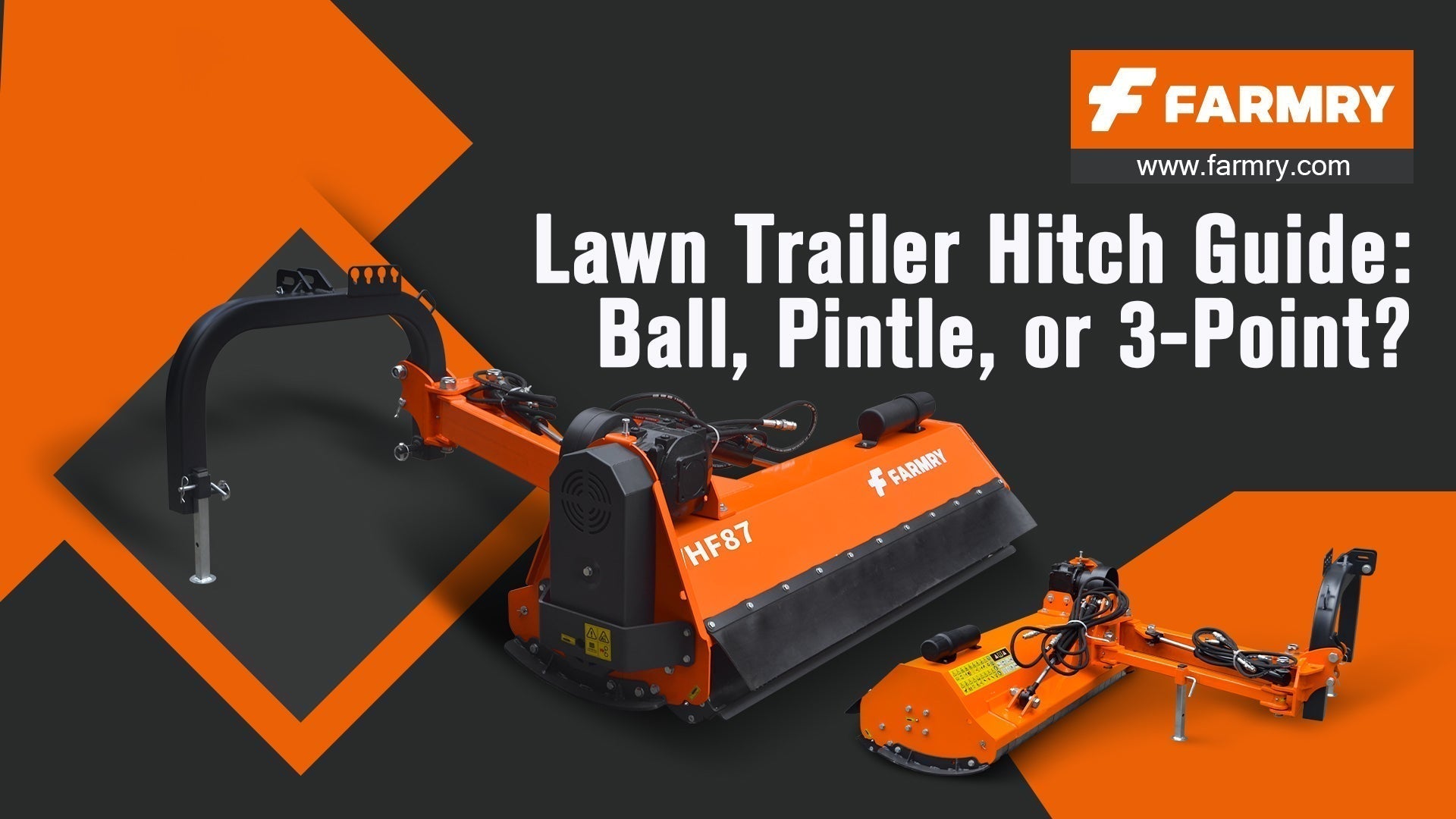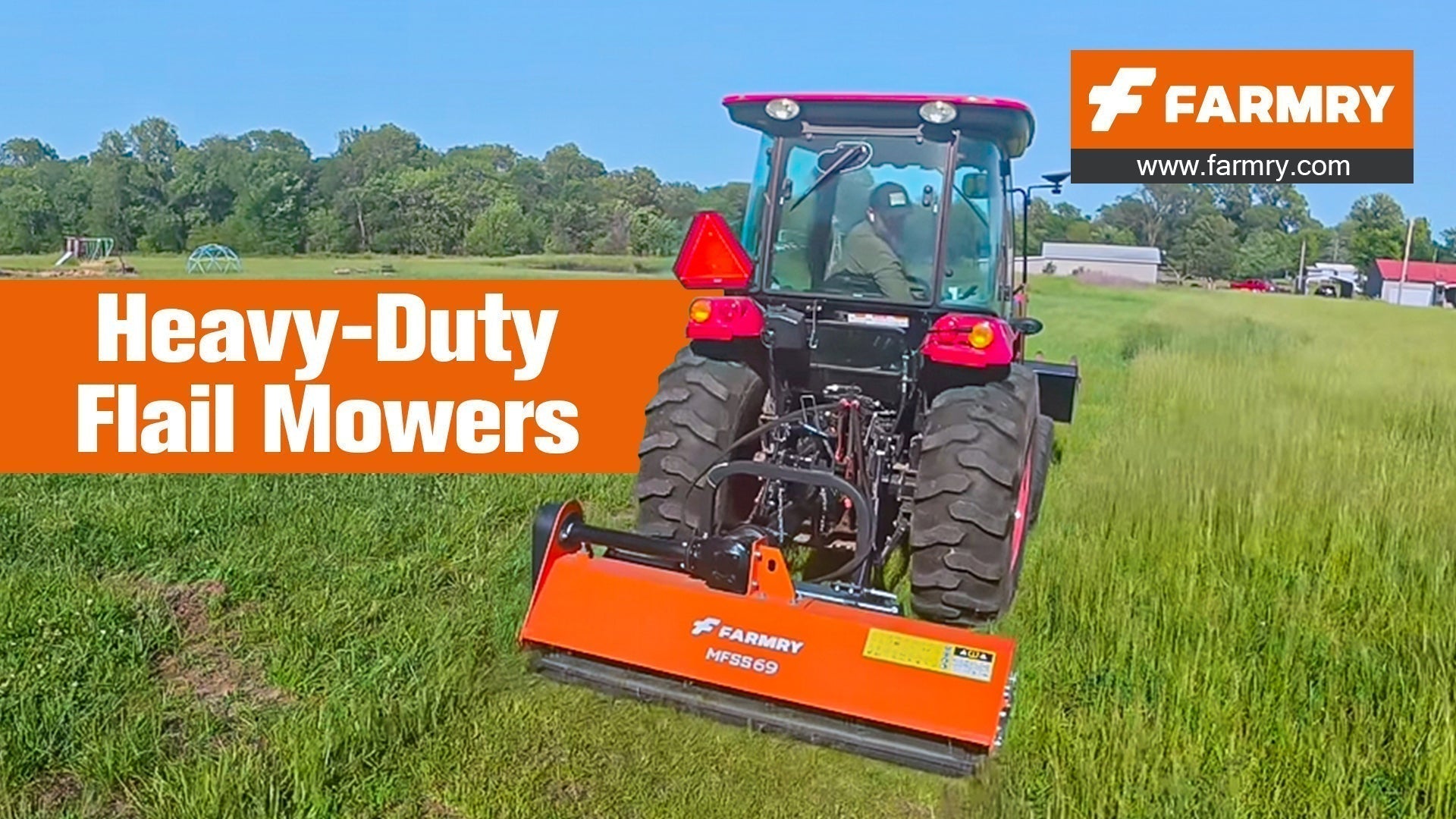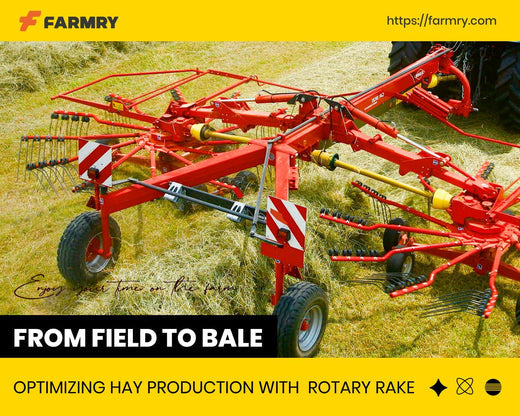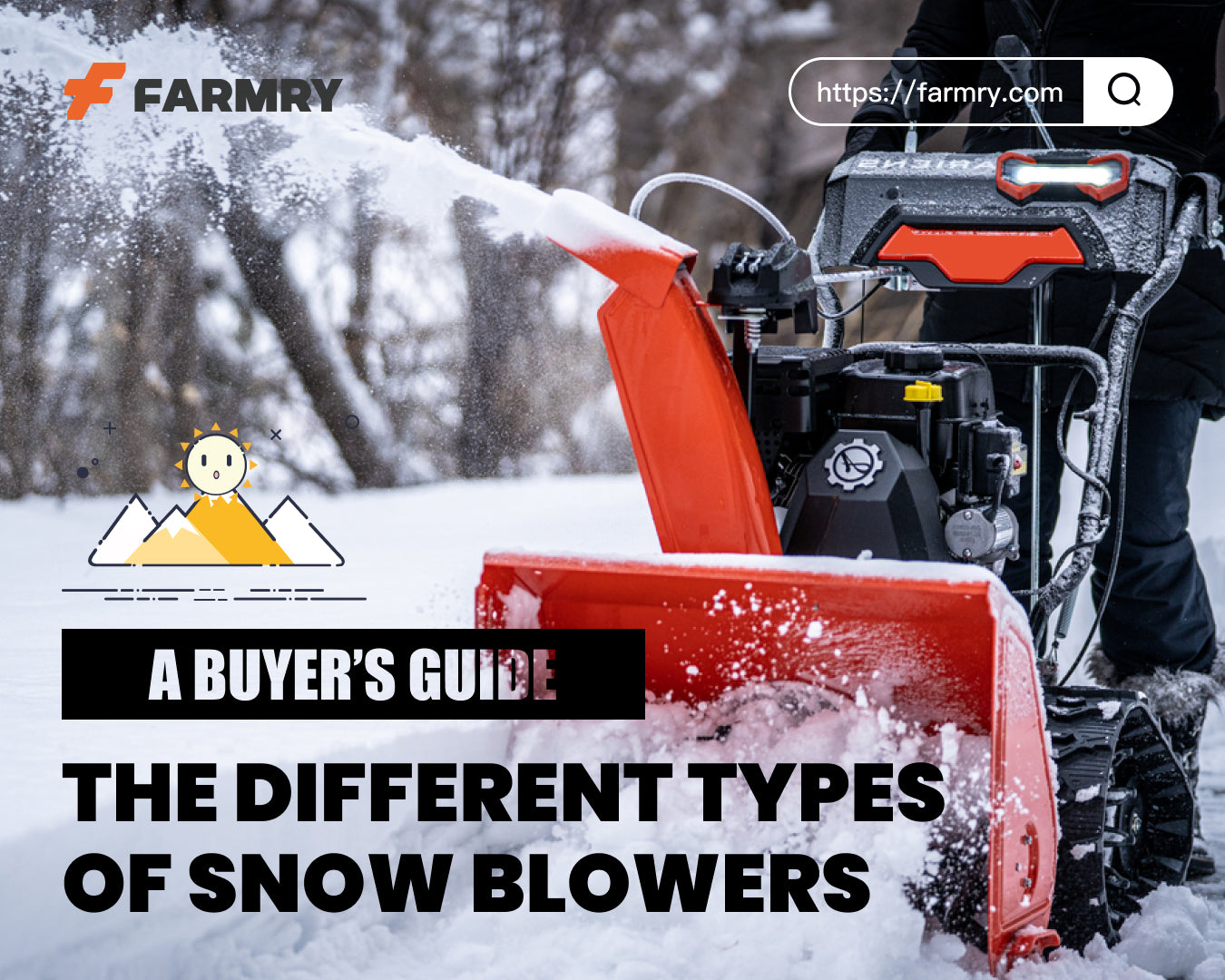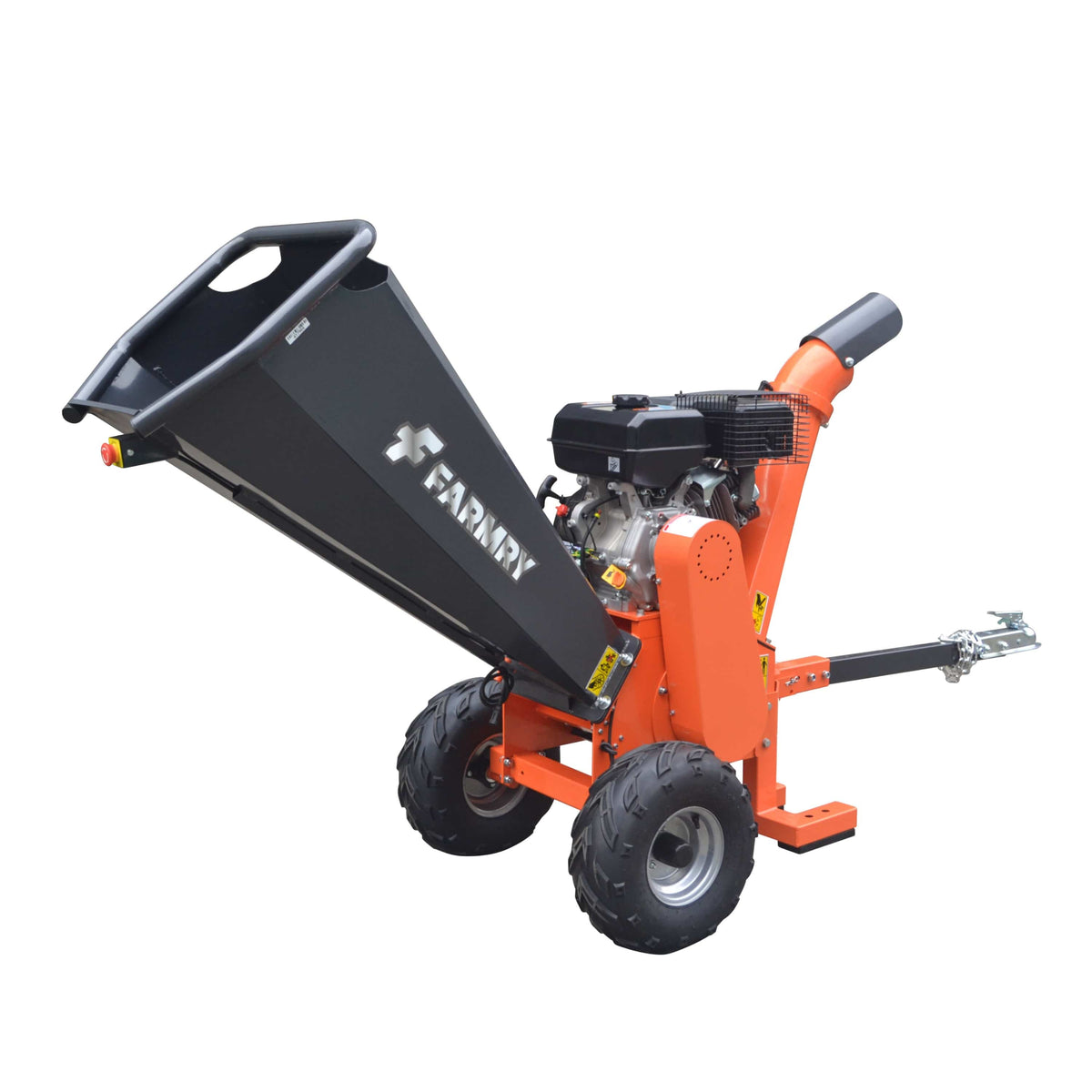Choosing Cut Width: 63″, 69″, 79″ Options
 Offset Flail Mower Width Comparison: Choosing Between 63″, 69″, and 79″
Offset Flail Mower Width Comparison: Choosing Between 63″, 69″, and 79″
When you're managing land, choosing the right mowing width isn’t just about cutting faster—it's about matching your mower to your terrain, tractor, and time. Whether you're mowing fields, clearing fence lines, or managing uneven terrain, the width of your flail mower plays a big role in efficiency and performance.
This guide offers a simple offset flail mower width comparison, highlighting the strengths of Farmry’s 63", 69", and 79" flail mowers—so you can choose the one that works best for your land.
🌾 Why Cut Width Matters
A wider mowing width means fewer passes and faster job completion. But with greater width comes greater weight, more power needed, and tighter turning challenges—especially in small or sloped areas.
Farmry’s bank flail mowers with manual offset or hydraulic offset features help you adjust your mower laterally, so you can easily mow next to fences, walls, or down embankments.
📏 Offset Flail Mower Width Comparison
|
Model Width |
Best For |
Tractor HP (approx.) |
Terrain Type |
Key Features |
|---|---|---|---|---|
|
Small fields, fence lines |
25–45 HP |
Narrow, uneven terrain |
Lightweight, maneuverable |
|
|
General use, road edges |
25–65 HP |
Mixed conditions |
Balanced coverage vs flexibility |
|
|
Open fields, pasture mowing |
35–85 HP |
Flat, open land |
Most coverage, fewer passes |
🔧 Key Features Across Farmry Flail Mower Sizes
All Farmry flail mowers include the following to support smooth operation and long-term durability:
-
PTO shaft included for tractor hookup
-
Adjustable rear roller for cutting consistency on bumpy ground
-
Heavy duty frame with powder-coated finish
-
Optional hydraulic offset or manual offset for ditch banks or property edges
-
Over running clutch for drivetrain protection during stop/start
-
Compatible with wheel weights for improved balance on slopes
-
Designed for tractors with proper PTO brake and safety features
🆚 Flail Mowers vs Conventional Rotary Mowers
While conventional rotary mowers cut faster in clear conditions, they can leave rougher finishes and throw debris further. Farmry’s offset flail mowers shine where control, mulching, and precision matter.
-
Flail mowers are safer near people, animals, and fencing
-
Provide a finer mulch thanks to high-speed blade rotation
-
Easier to manage on uneven terrain or hilly areas
🛢️ What About Fuel and Power Considerations?
A wider mower can put more strain on your fuel tank and engine. That’s why matching mower width to your tractor’s horsepower—and fuel efficiency—is key.
-
63″: Great for fuel economy and smaller fuel tanks
-
69″: Balanced performance without excessive consumption
-
79″: Best for larger tractors with bigger tanks and reserve power
❓ FAQs
Q1: What’s the best flail mower size for tight fence lines?
The 63″ with manual offset gives you the flexibility to mow along edges and around obstacles.
Q2: Will I need wheel weights for larger flail mowers?
If you're using a 79″ mower on hills or banks, adding wheel weights improves traction and safety.
Q3: How does hydraulic offset help?
Hydraulic offset lets you shift the mower sideways from the cab—ideal for reaching ditch edges and avoiding obstacles like trees or posts.
Q4: Can I use a flail mower on uneven terrain?
Yes. All models include an adjustable rear roller, helping the mower follow the ground without scalping.
Q5: Is a PTO brake important?
Yes. A PTO brake helps slow the rotor safely when disengaging power—critical for large-width mowers.
✅ Final Thoughts: Choose Smarter, Not Just Wider
In your search for the perfect mower, cut width matters—but so does versatility, safety, and control. With this offset flail mower width comparison, you're better equipped to match your tractor, land, and mowing goals to the right size.
For tight access and agility, the 63″ model fits best. For well-rounded capability, go with 69″. And for big coverage and productivity, the 79″ delivers unmatched field-clearing power.
Explore Farmry’s full range of heavy duty flail mowers today—designed with landowners in mind.

